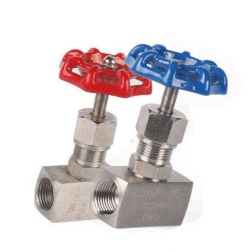Slip-On Flange Dimension Specifications in Millimeters for Various Applications
Understanding Slip-On Flange Dimensions
Slip-on flanges are one of the most commonly used types of flanges in piping systems. These flanges are designed to allow easy alignment and installation by simply slipping over the end of a pipe. The popularity of slip-on flanges can be attributed to their cost-effectiveness and ease of installation when compared to other types of flanges, such as weld neck flanges. However, understanding the dimensions of slip-on flanges is crucial for ensuring effective connections in various industrial applications.
What is a Slip-On Flange?
A slip-on flange is a circular piece of metal that fits over the pipe’s outer diameter. These flanges have a neck that allows for a weld bead to be applied, providing a strong seal. They are typically used in low-pressure applications and can accommodate both standard and custom pipe sizes. The design of the slip-on flange facilitates easy alignment, making them an attractive choice for many engineers and pipefitters.
Key Dimensions of Slip-On Flanges
The dimensions of slip-on flanges can vary depending on the industry standards (such as ASME, ANSI, or API) and the size of the pipes they will be connected to. However, several key dimensions are generally applicable across different standards
1. Nominal Pipe Size (NPS) This refers to the diameter of the pipe the flange will fit onto. It is critical to select the correct NPS to ensure a proper fit and seal.
2. Outer Diameter (OD) This is the total diameter of the flange, which also varies with NPS. The outer diameter needs to be adequately sized to accommodate the bolts used in the connection.
3. Bolt Circle Diameter (BCD) This dimension represents the diameter of the circle where the bolt holes are located. The BCD is crucial for ensuring that the bolts can be properly secured and that the flange will mate seamlessly with the corresponding flange on the connecting pipe or fitting.
slip on flange dimensions in mm

4. Number of Bolt Holes Most slip-on flanges come with a standard number of bolt holes depending on their size. Common configurations include 4, 8, or 12 holes.
5. Thickness The thickness of the flange plays a significant role in its strength and ability to withstand pressure. Thicker flanges are typically used in higher-pressure applications.
6. Hub Length The hub is the section of the flange that provides support for the pipe. The length of the hub may vary, and it is essential for ensuring the structural integrity of the connection.
Dimensional Standards
To provide a uniform approach to flange dimensions, several organizations have established standards. In the United States, the American National Standards Institute (ANSI) and the American Society of Mechanical Engineers (ASME) provide widely accepted guidelines for slip-on flanges. Each standard defines specific dimensions, tolerances, materials, and pressure ratings, ensuring compatibility across different manufacturers and installations.
Applications
Slip-on flanges are versatile and can be found in various applications across industries such as oil and gas, water treatment, and manufacturing. They are particularly useful in non-critical and low-pressure systems due to their cost-effectiveness and straightforward installation process.
Conclusion
Understanding slip-on flange dimensions is essential for anyone involved in piping design and installation. Proper selection and installation of these flanges can lead to improved performance, reduced leaks, and extended system life. By adhering to established industry standards and considering factors such as NPS, OD, BCD, and thickness, engineers and pipefitters can ensure that their piping systems function efficiently and safely. Whether for new installations or repairs, knowledge of slip-on flange dimensions will contribute to the overall reliability of industrial piping systems.
-
The Versatility of Ball Valves in Fluid Control SystemsNewsJun.10,2025
-
The Practical Benefits of Centerline Butterfly ValvesNewsJun.10,2025
-
The Benefits of Bellows Seal Globe Valves for Industrial SystemsNewsJun.10,2025
-
The Advantages of Offset Butterfly ValvesNewsJun.10,2025
-
Ductile Gate Valves: Strong, Reliable, and Essential for Every SystemNewsJun.10,2025
-
Cast Iron Gate Valves: A Reliable Solution for Every SystemNewsJun.10,2025
-
Why Choose a Brass Gate Valve for Superior Performance and DurabilityNewsMay.09,2025




